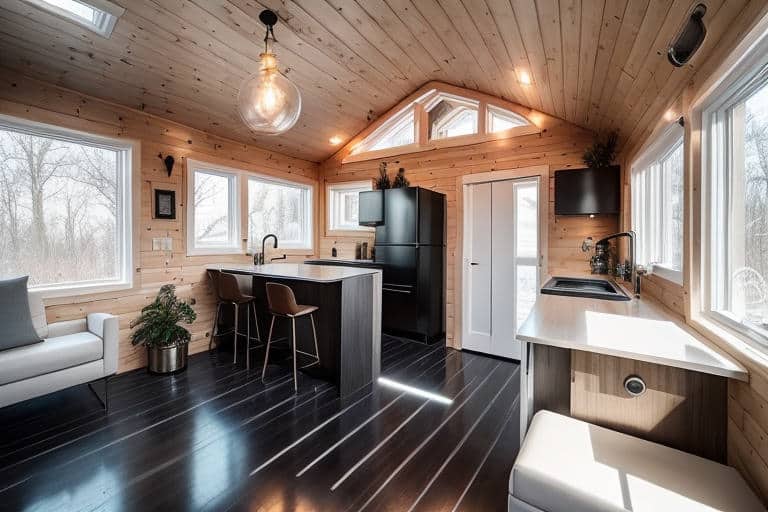Table of Contents
- Introduction
- II. The Benefits of Tiny Homes
- A. Financial benefits
- B. Environmental benefits
- C. Simplicity and freedom
- D. Ability to travel and explore
- E. Sense of community
- What is the average cost to build a tiny home?
- What is the difference between a tiny home and a mobile home?
- Can you legally live in a tiny home in all areas?
- How much space do you need to live comfortably in a tiny home?
- Are tiny homes energy efficient?
- How do you deal with waste and sewage in a tiny home?
- What kind of people typically live in tiny homes?
Introduction
Living in a big house with multiple rooms used to be the standard of living in the past. However, as the world continues to change, so do the living standards. In recent years, a new trend has emerged that is changing the way people think about their living space. The tiny homes movement, which advocates for living in smaller and simpler spaces, has gained significant popularity in the past decade. This movement has become a symbol of liberation and freedom for those who seek a simpler and more affordable lifestyle.
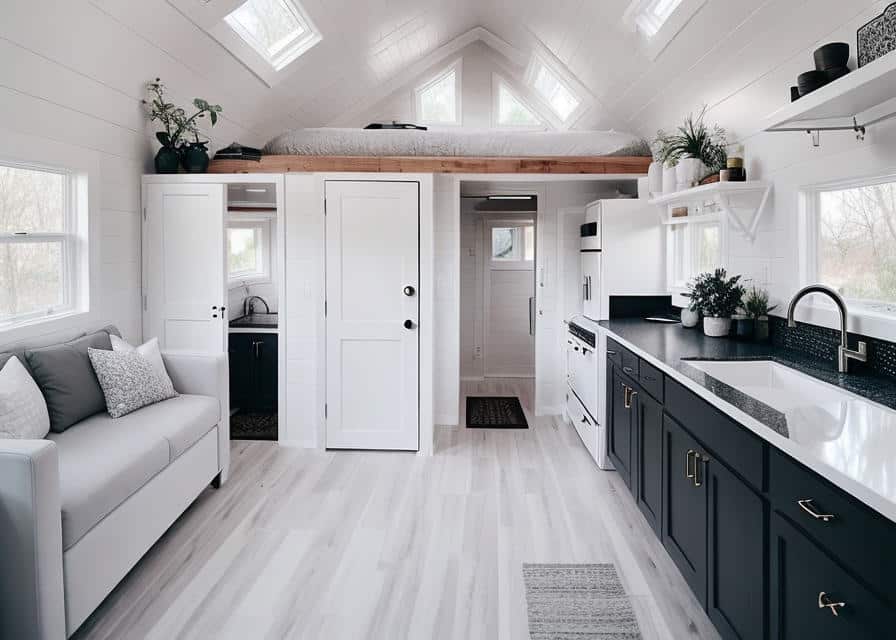
The tiny homes movement is not just about living in a small space; it is a lifestyle that promotes sustainability, minimalism, and a focus on experiences over material possessions. By downsizing their living space, people who embrace the tiny homes movement are finding a new level of freedom and flexibility that was previously unattainable. In this article, we will explore the liberation of living in a tiny home, the benefits and challenges of tiny living, and how the tiny homes movement is changing the way people think about housing.
II. The Benefits of Tiny Homes
The benefits of living in a tiny home go beyond just the financial aspect. They also extend to environmental, social, and emotional benefits. Here are some of the most significant benefits of tiny homes:
A. Financial benefits
Living in a tiny home can be significantly cheaper than living in a traditional home. The cost of building or buying a tiny home is considerably less than that of a conventional home. Additionally, living in a tiny home means lower utility bills, less maintenance costs, and a reduced need for home insurance. All of these savings can add up and provide significant financial benefits.
B. Environmental benefits
Tiny homes are more environmentally friendly than traditional homes. They are smaller, which means they require less energy to heat and cool. Additionally, many tiny homes are built with eco-friendly materials and feature renewable energy sources like solar panels. By living in a tiny home, individuals can reduce their carbon footprint and live a more sustainable lifestyle.
C. Simplicity and freedom
Living in a tiny home allows for a simpler and more minimalist lifestyle. By living with only the essentials, individuals can focus on experiences and relationships rather than material possessions. Additionally, the freedom that comes with living in a tiny home allows individuals to travel more easily and spend time in nature.
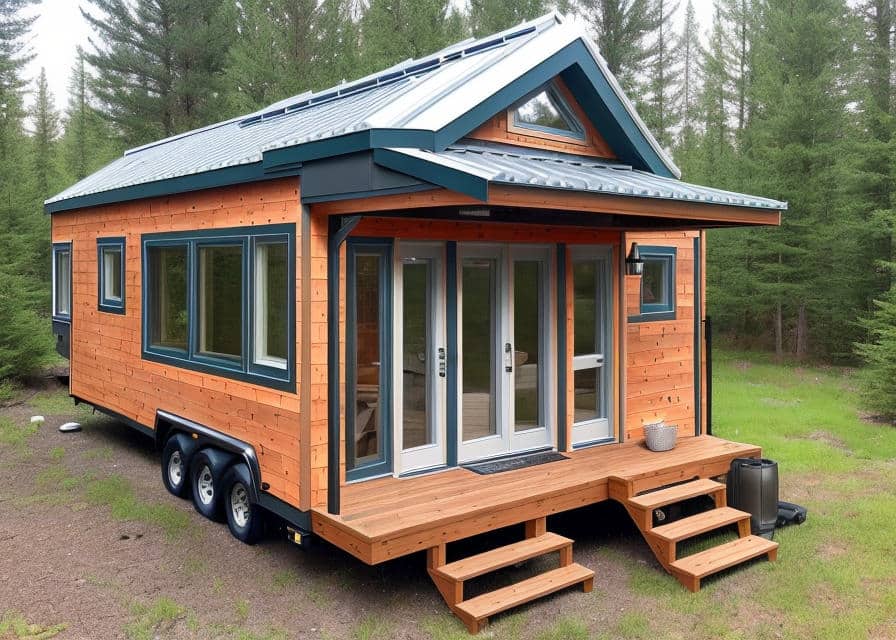
D. Ability to travel and explore
Many tiny homes are built on wheels, making them portable and allowing individuals to travel while still having a home base. This flexibility can open up opportunities for adventure and exploration that would be impossible with a traditional home.
E. Sense of community
Many tiny homes are built in communities or tiny home villages. This creates a unique sense of community and provides opportunities for social interaction with like-minded individuals. This sense of community can lead to improved mental health and overall well-being.
In summary, the benefits of tiny homes go beyond just financial savings. They offer environmental benefits, promote a simpler and more minimalist lifestyle, allow for greater flexibility and travel opportunities, and create a sense of community. The tiny homes movement is changing the way people think about housing and providing a new level of liberation and freedom to those who embrace it.
III. Designing and Building Tiny Homes
Designing and building a tiny home requires careful consideration of space and function. The design must maximize the use of every inch of space while still maintaining a comfortable and functional living environment. Here are some important factors to consider when designing and building a tiny home.
A. Smart design
In a tiny home, every inch of space counts. Smart design features such as multi-functional furniture, creative storage solutions, and open floor plans can make the space feel larger and more comfortable. Additionally, designing a tiny home with natural light in mind can make the space feel brighter and more open.
B. Maximizing space and storage
Storage is a crucial factor in tiny home design. Utilizing every inch of space is essential, including using vertical space and under-stair storage. Designing built-in furniture, such as beds or seating, can also help maximize space. It is essential to consider how every item in the home will be stored to avoid clutter and ensure the home remains organized.
C. Creative and unique designs
Tiny homes come in all shapes and sizes. Creative and unique designs can help the home feel more personalized and add to the overall experience of living in a tiny home. The design should also match the lifestyle and needs of the homeowner.
D. Challenges of building a tiny home
Building a tiny home presents unique challenges, such as complying with building codes, zoning regulations, and ensuring structural integrity. These challenges can make building a tiny home more complicated than building a traditional home, and it is essential to work with a builder experienced in building tiny homes.
E. Cost considerations
The cost of building a tiny home varies depending on the design, materials used, and whether the home is DIY or built by a professional. It is essential to consider all of the costs involved in building a tiny home, including permits, labor, and materials, to ensure that the project is financially feasible.
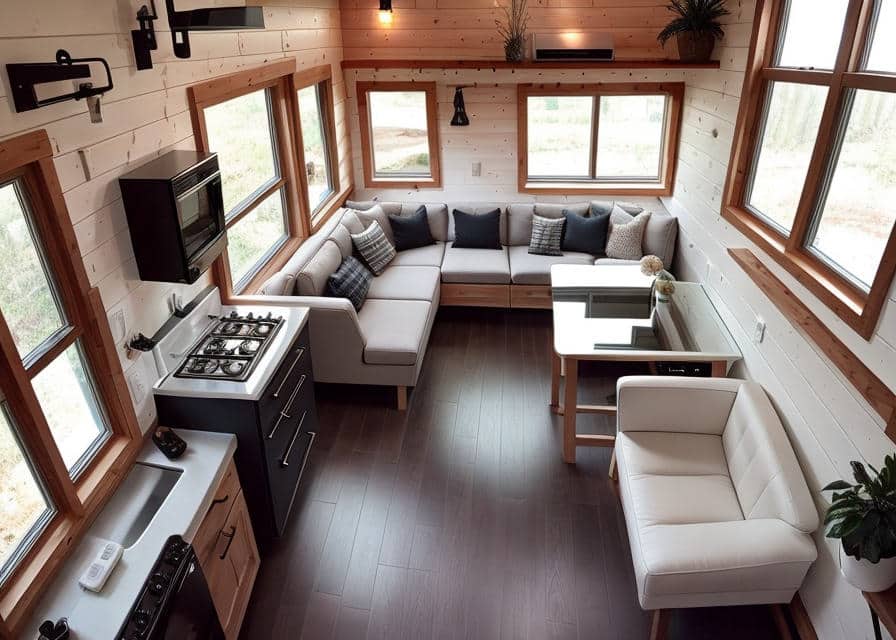
Designing and building a tiny home can be a challenging but rewarding experience. Careful consideration of smart design, storage solutions, and unique designs can make the space feel larger and more comfortable. Overcoming the challenges of building a tiny home and ensuring that the project is financially feasible are also crucial factors to consider. In the end, a well-designed and thoughtfully-built tiny home can provide liberation and freedom to those who embrace the tiny homes movement.
IV. Living in a Tiny Home
Living in a tiny home requires significant adjustments to daily life. Individuals who choose to live in a tiny home must be willing to adopt a more minimalist lifestyle and make sacrifices in terms of space and possessions. Here are some important factors to consider when living in a tiny home.
A. Downsizing and decluttering
Before moving into a tiny home, it is essential to declutter and downsize possessions. This process can be challenging but is necessary to make the most of the limited space in a tiny home. Many people find this process liberating and discover that they are happier with fewer possessions.
B. Daily routines and challenges
Living in a tiny home requires significant adjustments to daily life. The kitchen and bathroom may be smaller, and cooking and cleaning can be more challenging. Additionally, sleeping arrangements and privacy may require creative solutions. However, these challenges can be overcome with creative solutions and a willingness to adjust to a new way of living.
C. Organization and minimalism
Organization is crucial in a tiny home to avoid clutter and make the most of the limited space. Developing systems to keep the home organized and free of clutter is essential. Adopting a minimalist lifestyle can also help create a calm and serene environment in a tiny home.
D. Healthy and happy lifestyle
Living in a tiny home can have a positive impact on overall well-being. By simplifying life and adopting a minimalist lifestyle, individuals can reduce stress and increase happiness. However, it is important to ensure that the tiny home is set up to promote a healthy lifestyle, including proper ventilation, access to natural light, and healthy food preparation options.
E. Social dynamics
Living in a tiny home community can provide a unique social experience. Tiny home communities often have shared spaces and community events, providing opportunities for social interaction with like-minded individuals. However, it is important to recognize that living in a tiny home community requires a level of respect and consideration for others in the community.
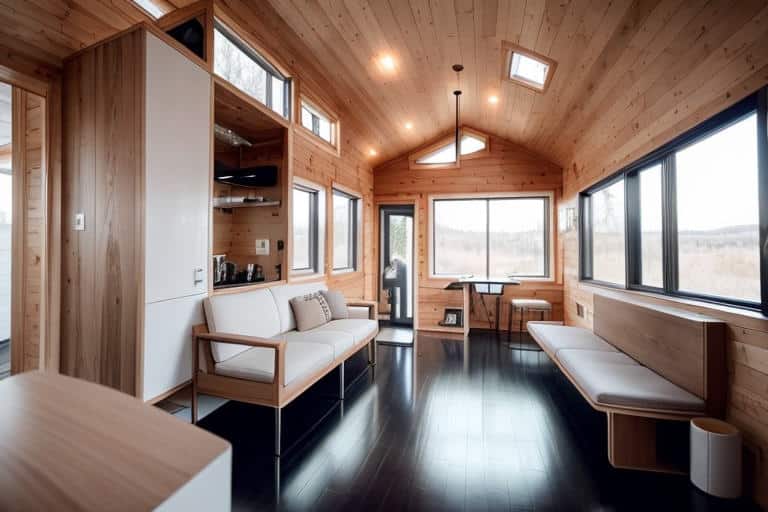
Living in a tiny home can be challenging but rewarding. By downsizing possessions and adopting a minimalist lifestyle, individuals can experience a greater sense of freedom and simplicity. Overcoming daily challenges and developing systems for organization and minimalism are essential for successful tiny home living. By focusing on a healthy and happy lifestyle and respecting others in the community, living in a tiny home can provide a unique and fulfilling experience.
VI. Conclusion
The tiny homes movement is more than just a trend; it is a lifestyle that is changing the way people think about their living space. Living in a tiny home offers financial benefits, environmental benefits, and the freedom to explore and travel. By embracing a minimalist lifestyle, individuals can focus on experiences and relationships rather than material possessions. Designing and building a tiny home requires careful consideration of space and function, and living in a tiny home requires significant adjustments to daily life.
The tiny homes movement has the potential to address housing challenges and provide liberation and freedom to those who embrace it. While there are challenges and obstacles to overcome, the rewards of living in a tiny home can be life-changing. By reducing the focus on material possessions and simplifying life, individuals can experience greater happiness and overall well-being.
In the end, the liberation of living in a tiny home is not just about the physical space; it is a mindset that prioritizes experiences and relationships over material possessions. The tiny homes movement is changing the way people think about housing and providing a new level of freedom and flexibility that was previously unattainable. By embracing the tiny homes movement, individuals can discover a new level of liberation and freedom in the modern world.
FAQs
What is the average cost to build a tiny home?
The cost of building a tiny home can vary greatly depending on the design, materials used, and whether the home is DIY or built by a professional. On average, a tiny home can cost between $20,000 to $100,000 to build.
What is the difference between a tiny home and a mobile home?
A tiny home is a small, often mobile, home that is typically between 100 and 400 square feet. Mobile homes are larger and are designed to be permanently attached to a foundation or set on a trailer.
Can you legally live in a tiny home in all areas?
The legality of living in a tiny home varies depending on the location. Zoning and building regulations can vary greatly from state to state, and in some areas, living in a tiny home may not be legal.
How much space do you need to live comfortably in a tiny home?
The amount of space required to live comfortably in a tiny home can vary depending on the individual. However, most tiny homes are between 100 and 400 square feet and are designed to maximize space and functionality.
Are tiny homes energy efficient?
Many tiny homes are built with energy efficiency in mind. They are often designed to be well-insulated, and many feature renewable energy sources like solar panels. Additionally, because they are smaller, they require less energy to heat and cool.
How do you deal with waste and sewage in a tiny home?
Many tiny homes use composting toilets and greywater systems to manage waste and sewage. These systems are designed to be eco-friendly and can be used off-grid.
What kind of people typically live in tiny homes?
People from all walks of life can be drawn to the tiny homes movement. Some individuals are looking for a more sustainable and minimalist lifestyle, while others are drawn to the financial and travel benefits of living in a tiny home. Tiny homes communities often attract like-minded individuals who value community and social interaction.

